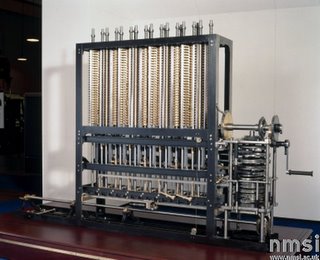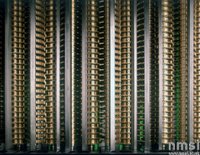 The Science Museum in London is one of the coolest places on this planet. Its seven floors are packed with fascinating stuff: from a huge, operational, factory-caliber steam engine to cars, computers, airplanes, model ships, satellites and rockets.
The Science Museum in London is one of the coolest places on this planet. Its seven floors are packed with fascinating stuff: from a huge, operational, factory-caliber steam engine to cars, computers, airplanes, model ships, satellites and rockets.
For an eternal little boy like me, it's a paradise on earth. I could spend days in there, just looking at the machines, learning how they work. The stories behind great inventions are also fascinating, and the Science Museum has succeeded in showing how these great inventions came to be. As we learn at school, there have been dedicated individuals who (sometimes demanding great personal sacrifices) got the brilliant ideas and developed new things. True at part, but the Science museum goes deeper than just showcasing these individuals and their work. You can actually see how each step of technology was based on the work of the previous generations, and how scientific breakthroughs involve teamwork and collaboration. And also, how development is driven not only by the individual scientists and innovators but the needs and values of the society, the funding bodies and the zeitgeist. And how some great innovators are so much ahead of their time that it is up to us, the posterity, to give them the recognition they would have deserved in their lifetime.
In this age of digital technology, technology is "everywhere and nowhere". We all use it all the time, but the actual machinery is too tiny to be seen and it is usually behind panels and inside grey boxes. And you can't really see what an electronic component does. Churning numbers is clinically clean and unsexy. All this makes you really marvel and respect the extremely high standard of mechanics, mechanical engineering and manufacturing of the "good old times". One machine per function, developed to perfection, built with shiny metal and brass. The early calculators, for instance, were all mechanical, and sooo beautiful.
The most impressive of these machines is the Difference Engine by Charles Babbage. He designed the impressive apparatus but ran out of funding and never completed building it.
Babbage studied in Cambridge, started a war against street musicians, got various government grants to develop his difference engines, invented numerous other things in the process (including uniform postage fees), founded a number of societies, got elected as the Lucasian Professor of Mathematics (position earlier held by Newton and currently held by Dr Stephen Hawking), never got around to giving a single lecture in that position, was widowed at an early age and dated Lady Lovelace, and finally divided by zero in London in 1871, when he had already fallen to virtual obscurity, and was buried with modest ceremonies. He has now been called The Father of Computing.
At that time, there were maths books full of multiplication tables, logarithmic tables etc., so that those who needed to make complex calculations could refer to those. Unfortunately, these books were all full of mistakes, and as a result structures would fall down, machinery not work properly, ships have accidents etc. Babbage knew that as long as the tables were calculated by hand, there would be mistakes, since humans tend to err on exactly these kinds of things. He was therefore determined to design and construct a machine that would not make mistakes, and he could then use the machine to make error-free tables.
In his lifetime, he only managed to make smaller models and parts of his difference engine. However, using his blueprints and sketches and notes, his machine was constructed in the 1980's and it is now up and running in the Science museum. At the moment, there's a workshop set up in the second floor of the museum, where they are building another difference engine. It will eventually be placed in a museum in the US. The DE2 weighs 2.6 tons and has more than 5000 parts. Therefore it's not too portable. It has a printer, though, so what ever you are calculating you will get the results printed for you. It is a very beautiful machine, and has a mesmerising quality to it. Just looking at all those shafts and dials and numbers and springs, all made out of shiny metal and connected to each other with such precision... Beautiful.
The DE2 weighs 2.6 tons and has more than 5000 parts. Therefore it's not too portable. It has a printer, though, so what ever you are calculating you will get the results printed for you. It is a very beautiful machine, and has a mesmerising quality to it. Just looking at all those shafts and dials and numbers and springs, all made out of shiny metal and connected to each other with such precision... Beautiful.
That was the kind of aesthetics that pleased Babbage himself, as he hated music and especially street musicians, or "street nuisances" as he called them. There's a crater in the moon called Charles Babbage. Probably a suitable place to send all the street nuisances to.
(all pictures © NMSI)
Wednesday, January 25, 2006
Science Museum
Subscribe to:
Post Comments (Atom)

No comments:
Post a Comment